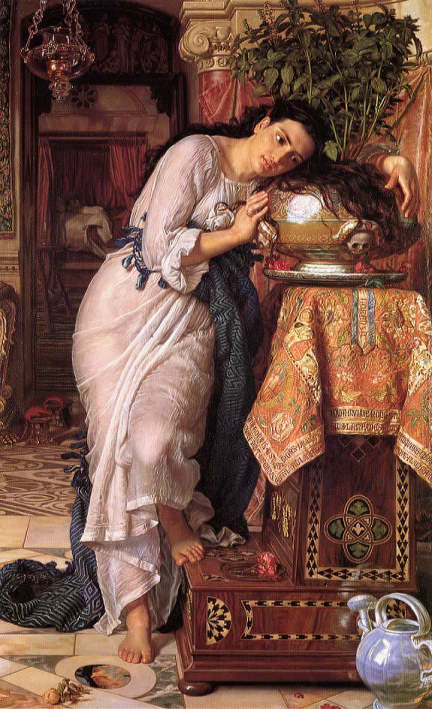Facts About Isabella and the Pot of Basil
"Isabella and the Pot of Basil" is an evocative painting by William Holman Hunt, completed in 1868. Drawing inspiration from John Keats's poem "Isabella, or the Pot of Basil" the artwork portrays Isabella tenderly caressing a pot of basil in which she has buried the head of her murdered lover, Lorenzo.
Hunt initially sketched an illustration of the poem in 1848, but it wasn't until 1868 that he finished the painting. The piece holds profound personal significance for Hunt, who tragically lost his wife, Fanny, shortly after he began working on it. He immortalized Fanny by incorporating her features into Isabella's character, thereby transforming the painting into a heartfelt tribute to her.
In the painting, Isabella is depicted in a nightgown, leaning over an altar with the basil pot containing Lorenzo's head. Hunt's use of rich colors, sensuality, and decorative elements exemplifies the Aesthetic movement and aligns with the style of other Pre-Raphaelite artists like John Everett Millais and Dante Gabriel Rossetti.
Hunt's "Isabella and the Pot of Basil" left a lasting impression on other artists, including John White Alexander and John William Waterhouse, who created their own interpretations of the subject. While Alexander and Waterhouse brought their unique touches to their versions, they retained key elements from Hunt's original work. For instance, Waterhouse reversed the composition and set the scene in a garden, yet preserved the essential motifs that made Hunt's painting so memorable.

 Ireland
Ireland